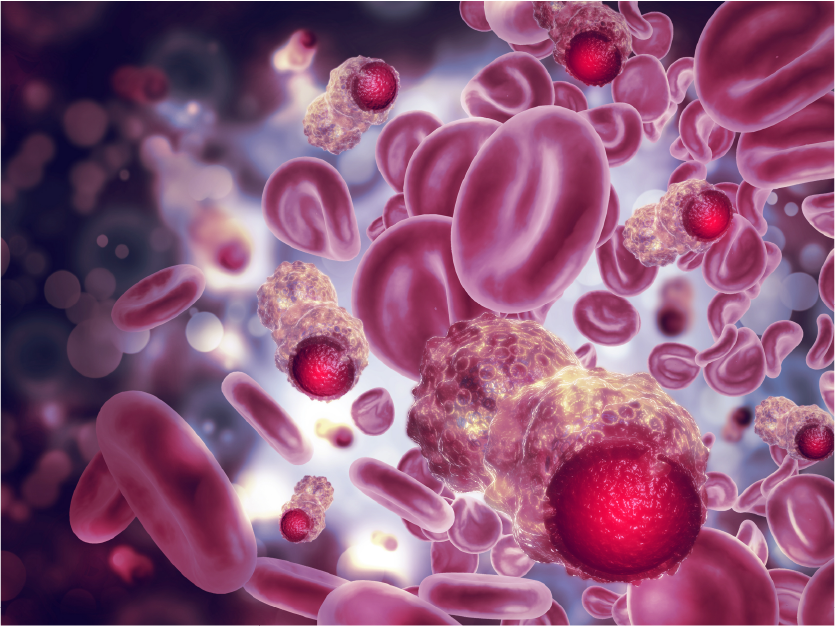When I was an aspiring (much younger) scientist, one of the challenges was finding quality antibodies to accommodate our research group’s high-throughput Western blotting platform 1 while studying signaling pathways in cancer cell lines. When I got into marketing, I learned about ABclonal’s high-quality, high-specificity, and high-affinity antibody products. I really wish that I had access to these products when I was doing my thesis research! With a team of passionate, capable scientists supporting these quality products, I was thrilled at the opportunity to be part of this company and to help spread ABclonal’s brand to the scientific community.
I have always been fascinated by cellular signaling and how different types of cells utilize a vast array of growth factor receptors and other receptor systems to recognize a ligand, then subsequently activate a coordinated cascade. It is almost magical how each receptor-ligand pairing, or a multiple-receptor system, can fine-tune the downstream signaling to ensure that the correct set of genes are expressed to elicit the appropriate response, even though many signaling networks utilize the same core set of proteins and enzymes. I have worked with lymphocyte signaling as well as receptor tyrosine kinase signaling networks. Because of my background with both immunology and cancer biology, much of my signaling research involved the study of the major mitogen-activated protein kinases (MAPK), including the p38-MAPK pathway.
The Many Functions of the p38-MAPK Signaling Pathway
In normal tissues, including those of the nervous system, 2 the p38-MAPK signaling pathway allows cells to receive and transduce a variety of extracellular signals, mostly in response to stress signals. Depending on the type of cell and the signal (or signals) that cell is exposed to, p38-MAPK can function as either a positive signal to promote cellular survival, or as a mediator of cell death. The p38-MAPK can be activated via phosphorylation by upstream MAP kinase kinases (MKK), specifically MKK3 and MKK6, and it in turn will phosphorylate downstream components of the pathway. The coordination of these various components, both upstream and downstream of p38-MAPK, will elicit appropriate responses to those signals in processes including cellular growth and differentiation, apoptosis and autophagy, and oxidative stress. 3 The p38-MAPK substrates include many transcription factors including MEF2, CREB, CHOP, ELK1, and p53, which will play a significant role in regulating gene expression through transcriptional activity and chromatin remodeling. 4 A summarized view of the p38-MAPK pathway is illustrated in Figure 1 below, and you can also go to our pathway page to learn more about products that can be used to bolster your studies.
 Figure 1: Summarized p38-MAPK signaling pathway
Figure 1: Summarized p38-MAPK signaling pathway
p38-MAPK in Cancer
Due to the diverse roles of p38-MAPK, it is no surprise that it is often studied in cancer signaling due to its key roles in promoting the classical hallmarks of cancer. 4, 5 Numerous studies have implicated p38-MAPK in the progression of multiple cancer types including prostate cancer, breast cancer, lung cancer, and leukemia. The activation of the p38-MAPK has been shown to promote the epithelial-mesenchymal transition (EMT) to allow the primary tumor to acquire invasive capability, which will subsequently lead to metastasis to other tissues. 6 Other studies have shown that it is the inhibition of p38-MAPK that correlates to cancer cell survival, which suggests that p38-MAPK can play tumorigenic and tumor suppressive roles. 4
Although we have a better understanding of the role of p38-MAPK in cancer progression, there remains much to be done to determine how to properly modulate the signaling network to prevent tumorigenesis. Taken together, the wealth of information on this central pathway indicates its importance as a model for normal and cancer cellular signaling as well as a target for potential therapeutics against cancer and other diseases.
How ABclonal Can Help
ABclonal boasts a plethora of antibodies throughout the p38 MAPK signaling pathway. For example, please note that the pan-specific p38 MAPK rabbit monoclonal antibody (Cat. No. A4771) is able to detect the protein’s expression in numerous cell lines and tissues from multiple species (Figure 2).
Figure 2: p38 MAPK rabbit mAb (A4771)
Additionally, ABclonal provides a variety of target-specific antibodies both upstream and downstream of the p38 MAPK, including the membrane-proximal RAS GTPases which are classical oncogenes, and transcription factors and putative tumor suppressors like p53. 7, 8 With emerging science on how metabolism plays a key role in tumor progression, the role of p53 remains as important as when it was first characterized. 7
Aside from the pan-specific antibodies, ABclonal antibody products are also designed to detect post-translational modifications of target proteins, such as phosphorylation and acetylation. For example, the Acetyl-p53-K382 Rabbit mAb (Cat. No. A16324) detects the acetylation of lysine 382 on p53, which is carried out by p300 and CREB-binding protein. This acetylation event, in concert with other major acetylations on p53, keeps p53 in an open conformation and promotes recruitment of coactivators to the p21 promoter, which increases histone acetylation in response to DNA damage. 9
Please see the table below for examples of these products related to the p38-MAPK pathway, which have been reviewed by scientists and used in publications:
|
Cat. No. |
Product Name |
Feel free to also explore our pathway page and our wide selection of products to supplement your research experience!
REFERENCES
- Ciaccio et al. (2010) “Systems analysis of EGF receptor signaling dynamics with microwestern arrays.” Nature Methods 7:148-155
- Asih et al. (2020) “Functions of p38 MAP Kinases in the Central Nervous System.” Front. Mol. Neurosci. 13:570586
- Cuadrado and Nebreda (2010) “Mechanisms and functions of p38 MAPK signalling.” Biochem J. 429(3):403-417.
- Koul, Pal, and Koul (2013) “Role of p38 MAP Kinase Signal Transduction in Solid Tumors.” Genes & Cancer 4(9-10):342-359.
- Hanahan and Weinberg (2011) “Hallmarks of Cancer: The Next Generation.” Cell 144(5):646-674.
- Barrantes and Nebreda (2012) "Roles of p38 MAPKs in invasion and metastasis." Biochem Soc Trans 40(1):79-84.
- Gnanapradeepan et al. (2018) "The p53 Tumor Suppressor in the Control of Metabolism and Ferroptosis." Front. Endocrinol. 9:124
- Mantovani et al. (2019) "Mutant p53 as a guardian of the cancer cell." Cell Death & Differentiation 26:199-212
- Reed and Quelle (2015) "p53 Acetylation: Regulation and Consequences." Cancer (Basel) 7(1):30-69.





